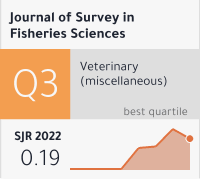Lobster Fishery and aquaculture development in the North coast of Gulf of Oman: with emphasis on spiny lobster Panulirus homarus
DOI:
https://doi.org/10.17762/sfs.v8i2.53Keywords:
Scalloped spiny lobster, Stock enhancement, Gulf of OmanAbstract
Spiny lobsters are one of the most important commercial and highly priced crustaceans along the Southern coast of Iran (Sistan and Baluchistan Province). In the last three decades, the economy of a large part of the fishermen population has been directly dependent on it. The lobster fishing rate decreased from 42 t in 1989 to 1 t in 2004. This has been attributed to the effects of improper fishing methods and overfishing. Meanwhile, Oman, as a leading country in the fishing industry in the Gulf of Oman, produced 450 t of lobster in 2016, compared to 416 t in 2015. Little attention has been paid to lobsters by related organizations. This neglect in framing and enforcing fishing regulations has led to heavy fishing pressure on this vulnerable resource along the southern coast of Iran. For this reason, some efforts have been made by researchers at the Iranian fisheries science research institute, such as the Preliminary study of lobster biology, feeding biology and ecology, designing the appropriate lobster trap, designing an artificial reef as a shelter for lobster; and some experimental research is currently underway to assess population dynamics and maximum sustainable yield (MSY). Furthermore, the release of artificially raised lobster juveniles contributes to the re-establishment or enhancement of lobster stocks. However, one of the main problems for successful restock programs has been the lack of inexpensive methods for juvenile production.










